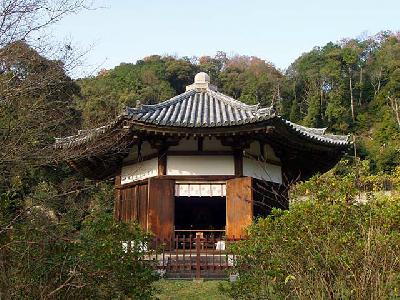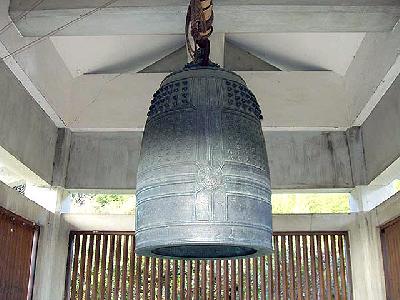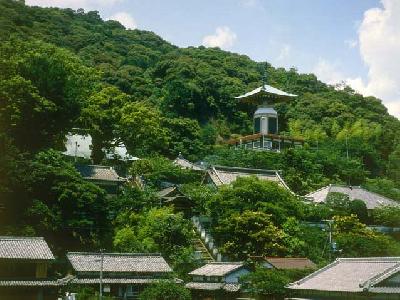|
Eisanji Temple overlooks the Yoshino River in Nara. It is an ancient temple that conserves the glory and eminence of the Tenpyo even today. It is said that the temple was built in 719 during the Nara period, by Muchimaro, the first-born child of Fujiwara no Fuhito.
The temple was originally called Sakiyamaji during the time that it was first constructed, but as it developed and became part of the Fujiwara family's Bondaiji temple, it was renamed Eisanji.
The main feature of the temple is without doubt the Hakakudo, which was designated as a national treasure. The Hakakudo, as one of the Endo of the Tenpyo period, is a very precious ruin on par with the Yumedono of Horyuji temple. It is said that the Hakakudo was built by Nakamaro, son of Muchimaro, in order to grieve for his father's bodai. The seated figure of the Yakushinyorai (master of healing) located within the temple is also designated as an important cultural property. Moreover, an inscription written in an Ononotou style can be seen on a bell (national treasure), which is acknowledged as one of Japan's three great bells, along with the bell of the Uji Byodoin.
Azalea and yamabuki blossom all over the grounds of the temple from the end of April to the beginning of May, creating a beautiful and vibrant scene.
The temple was originally called Sakiyamaji during the time that it was first constructed, but as it developed and became part of the Fujiwara family's Bondaiji temple, it was renamed Eisanji.
The main feature of the temple is without doubt the Hakakudo, which was designated as a national treasure. The Hakakudo, as one of the Endo of the Tenpyo period, is a very precious ruin on par with the Yumedono of Horyuji temple. It is said that the Hakakudo was built by Nakamaro, son of Muchimaro, in order to grieve for his father's bodai. The seated figure of the Yakushinyorai (master of healing) located within the temple is also designated as an important cultural property. Moreover, an inscription written in an Ononotou style can be seen on a bell (national treasure), which is acknowledged as one of Japan's three great bells, along with the bell of the Uji Byodoin.
Azalea and yamabuki blossom all over the grounds of the temple from the end of April to the beginning of May, creating a beautiful and vibrant scene.
| [+ADDRESS] | 
|















